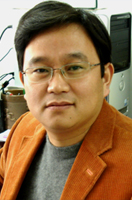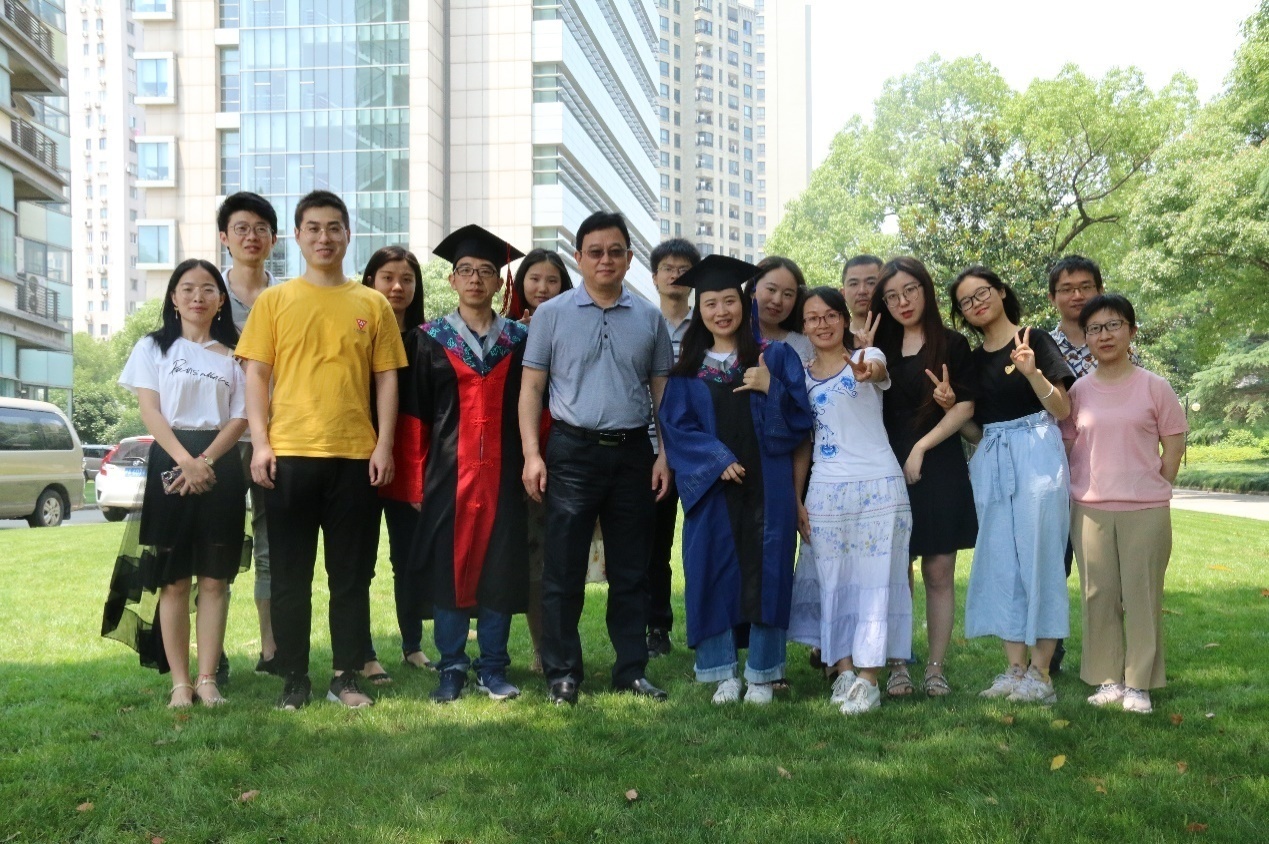昆虫分子病理及真菌分子生物学研究组(王成树)

研究组长:王成树 研究员
王成树,博士、研究员。2001于中国农业大学获博士学位。2001至2006年间,先后于英国University of Wales Swansea及美国University of Maryland从事博士后研究。2007年1月月至2020年4月被聘为中国科学院上海生命科学研究院植物生理生态研究所课题组长、研究员。2020年5月至今被聘中国科学院分子植物科学卓越创新中心/上海植物生理生态研究所研究员、课题组长。主要从事真菌—昆虫互作机理、真菌遗传及化学生物学,以及等。在Nature Biotechnology, PNAS, Genome Biology, Autophagy, Cell Chemical Biology和PLoS Pathogens等期刊发表SCI论文90余篇,包括受邀于Annual Review of Entomology, Advances in Genetics和PLoS Pathogens等期刊发表研究综述。2009年获国家科技进步二等奖(排名第二);2012年获国务院政府特殊津贴;2017年获中国菌物学会“戴芳澜杰出成就奖”和亚洲真菌联合会“杰出真菌学家奖”;2018年获上海市“优秀学术带头人”称号。曾任中国菌物学会理事长,现在中国昆虫学会副理事长。目前承担有国家基金委重点项目、国家重点研发及中科院等科研项目。
主要研究方向及内容
研究方向:昆虫分子病理与真菌分子生物学
研究内容:
(1)真菌—昆虫互作的效应机理研究:在比较基因组、比较转录组和蛋白质组分析的基础上,研究球孢白僵菌与绿僵菌等毒力相关效应蛋白基因介导真菌—昆虫互作的分子机理;昆虫病原真菌与昆虫体表微生物组互作等。
(2)虫生真菌次级代谢机理及化学生物学研究:通过表观遗传、反向遗传及化学生物学等手段,研究虫生真菌次级代谢产物多样性、合成机理与生物学功能;
(3)真菌种群遗传与进化:昆虫病原真菌遗传进化、泛基因组,种群遗传、基因水平转移与扩张,环境宿存与寄主偏好性形成的遗传研究等。
(4)丝状真菌退化机理研究:细胞自噬、线粒体功能、氧化胁迫与真菌退化的关联性及机理研究。
研究队伍:
工作人员:唐桂容、殷颖
博士后:罗飞飞
研究生:陈波、李冰、洪松、尚俊梅、盛馨露、宋双秀、李新林、汪学文、孙岩磊、李士琴、陈思亦

代表性论文:
1. Mei LJ, Chen MJ, Shang YF, Tang GR, Tao Y, Zeng L, Huang B, Li ZZ, Zhan S*, Wang CS*. 2020. Population genomics and evolution of a fungal pathogen after releasing exotic strains to control insect pests for 20 years. ISME J, doi: 10.1038/s41396-020-0620-8.
2. Huang W, Hong S, Tang GR, Lu YZ, Wang CS*. 2019. Unveiling the function and regulation control of the DUF3129 family proteins in fungal infection of hosts. Philosophical Transactions of the Royal Society B: Biological Sciences, 374(1767): 20180321. doi: 10.1098/rstb.2018.0321
3. Yang XQ, Feng P, Yin Y, Bushley K, Spatafora JW, Wang CS*. 2018. Cyclosporine biosynthesis in Tolypocladium inflatum benefits fungal adaptation to the environment. mBio, 9(5):e01211-18.
4. Wang CS*, Wang SB. 2017. Insect pathogenic fungi: genomics, molecular interactions, and genetic improvements. Annual Review of Entomology, 62: 73-90.
5. Xia YL, Luo FF, Shang YF, Chen PL, Lu YZ, Wang CS*. 2017. Fungal cordycepin biosynthesis is coupled with the production of the safeguard molecule pentostatin. Cell Chemical Biology, 24: 1479-1489.
6. Cen K, Li B, Lu YZ, Zhang SW, Wang CS*. 2017. Divergent LysM effectors contribute to the virulence of Beauveria bassiana by evasion of insect immune defenses. PLoS Pathogens, 13(9): e1006004.
7. Feng P, Shang YF, Cen K, Wang CS*. 2015. Fungal biosynthesis of the bibenzoquinone oosporein to evade insect immunity. Proceedings of the National Academy of Sciences USA, 112(36): 11365-11370.
8. Shang YF, Feng P, Wang CS*. 2015. Fungi that infect insects: altering host behavior and beyond. PLoS Pathogens, 11(8): e1005037.
9. Hu X, Xiao GH, Zheng P, Shang YF, Su Y, Zhang XY, Liu XZ, Zhan S, St. Leger RJ, Wang CS*. 2014. Trajectory and genomic determinants of fungal-pathogen speciation and host adaptation. Proceedings of the National Academy of Sciences USA, 111(47): 16796-16801.
10. Li L, Hu X, Xia YL, Xiao GH, Zheng P, Wang CS.* 2014. Linkage of oxidative stress and mitochondrial dysfunctions to spontaneous culture degeneration in Aspergillus nidulans. Molecular & Cellular Proteomics, 13(2): 449-461.
11. Duan ZB, Chen YX, Huang W, Shang YF, Chen PL, Wang CS*. 2013. Linkage of autophagy to fungal development, lipid storage and virulence in Metarhizium robertsii. Autophagy, 9(4): 538-549.
12. Wang B, Kang QJ, Lu YZ, Bai LQ, Wang CS*. 2012. Unveiling the biosynthetic puzzle of destruxins in Metarhizium species. Proceedings of the National Academy of Sciences USA, 109(4): 1287-1292.
13. Zheng P, Xia YL, Xiao GH, Xiong CH, Zhang SW, Zheng HJ, Huang Y, Zhou Y, Wang SY, Zhao G-P. Liu XZ, St. Leger RJ, Wang CS*. 2011. Genome sequence of the insect pathogenic fungus Cordyceps militaris, a valued traditional Chinese medicine. Genome Biology, 12(11): R116.
14. Gao Q, Jin K, Ying S-H, Zhang YJ, Xiao GH, Shang YF, Duan ZB, Hu X, Xie XQ, Zhou G, Peng GX, Luo ZB, Huang W, Wang B, Fang WG, Wang SB, Zhong Y, Ma L-J, St. Leger RJ, Zhao G-P, Pei Y, Feng M-G*, Xia YX*, Wang CS*. 2011. Genome sequencing and comparative transcriptomics of the model entomopathogenic fungi Metarhizium anisopliae and M. acridum. PLoS Genetics, 7(1): e1001264.
15. Wang CS*, St Leger RJ*. 2007. A scorpion neurotoxin increases the potency of a fungal insecticide. Nature Biotechnology 25(12):1455-1456.
16. Wang CS, St Leger RJ*. 2006. A collagenous protective coat enables Metarhizium anisopliae to evade insect immune responses. Proceedings of the National Academy of Sciences USA 103(17): 6647-6652.